Perth Seawater Desalination Plant
The Perth Seawater Desalination Plant, located in Kwinana, started production in 2006. On average, the Perth Seawater Desalination Plant produces 15% of Perth's water supply. The plant has the capacity to output 50 billion litres of water per year - enough to fill Optus stadium 50 times.
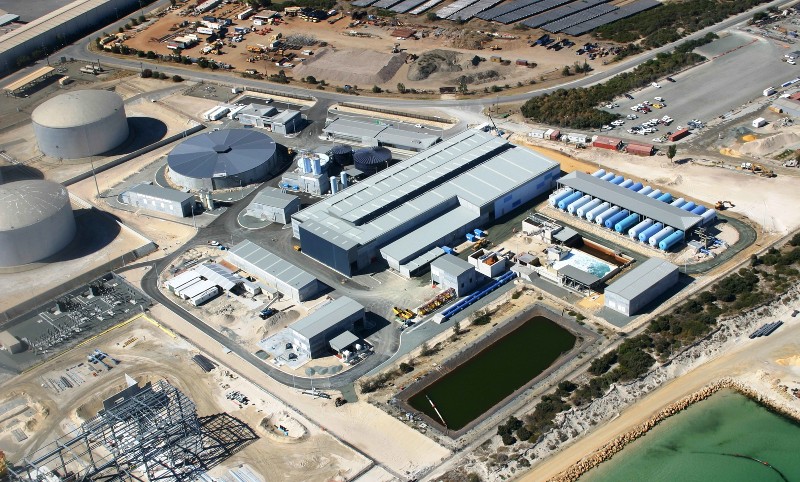
Protecting the environment
We are dedicated to protecting the marine environment of Cockburn Sound. We achieve this by:
- undertaking continuous, real-time water quality monitoring of water entering and leaving the plant
- undertaking routine marine monitoring at various locations in Cockburn Sound and regular performance tests on the diffuser system
- working closely with local groups, and
- regularly inspecting all offshore infrastructure to make sure the plant is working at maximum efficiency.
Since operations began, we have met all environmental requirements as detailed in our operating licence issued by the Department of Environment Regulation and the conditions and commitments specified in Ministerial Statements 655 and 832 issued by the Office of the Environmental Protection Authority.
Read our most recent compliance report.
Underwater footage from the plant
Protecting the coast
In partnership with the Perth Region Natural Resource Management group, we plant native shrubs in the dunes near the plant. This has helped prevent erosion and encouraged native fauna back to the area after construction. We also hold an annual clean-up of rubbish on the stretch of beach close to the plant.
Working with our stakeholders and the community
We continue to work closely with the Cockburn Sound Management Council (CSMC) and support their ongoing environmental monitoring and annual reporting requirements. Water Corporation is an active member on the CSMC Reference Group and Kwinana Industries Council.
We're also proud partners with Ozfish Seeds for Snapper program. The program is one of Australia's largest seagrass restoration projects. Volunteers collect and disperse more than 1 million seeds in Cockburn Sound each year. Seagrass meadows provide nursery grounds for fish and help prevent shoreline erosion. Read more about our Ozfish partnership.
Underwater photos
Inspections of our marine intake show a variety of fish, crabs, octopus, seahorses, mussels, barnacles, sponges, algae and hard and soft corals colonising the outfall.
All photos were taken by Fremantle Commercial Diving on behalf of Water Corporation.
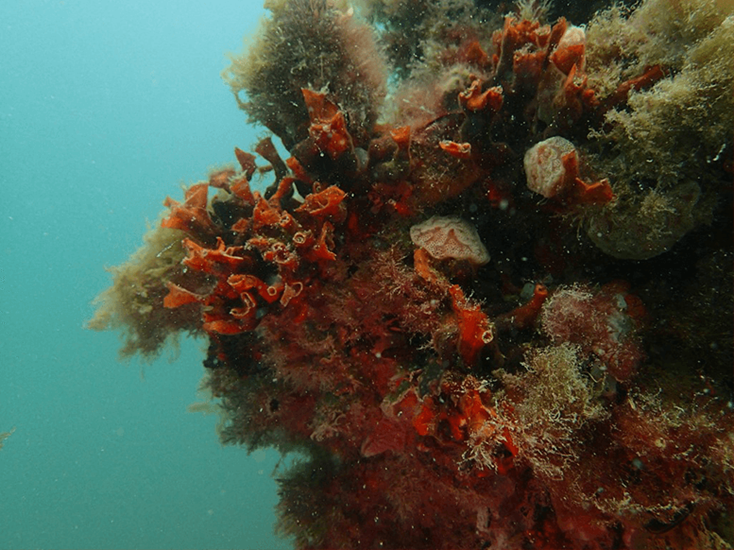
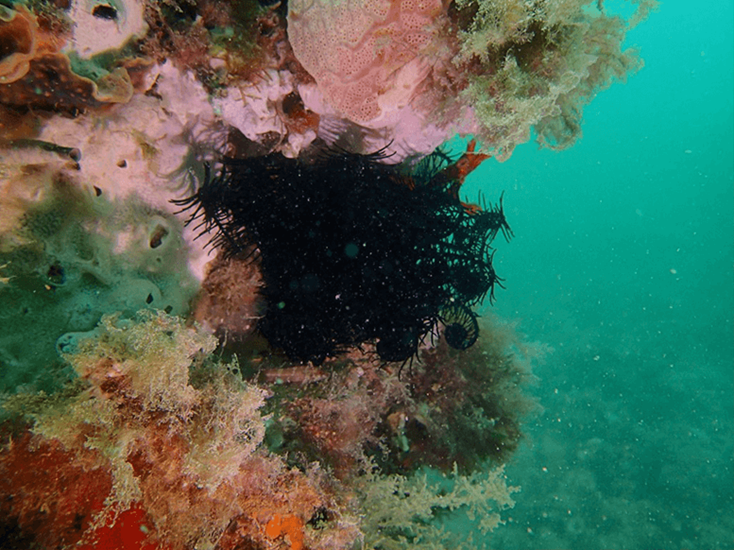
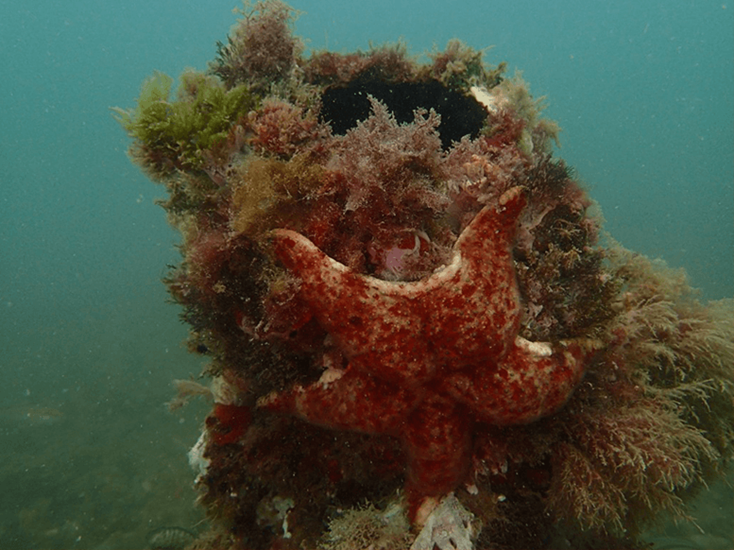
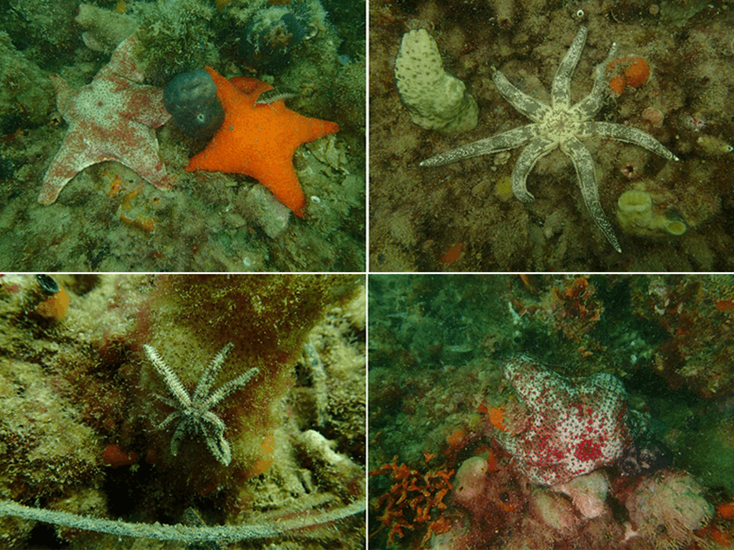
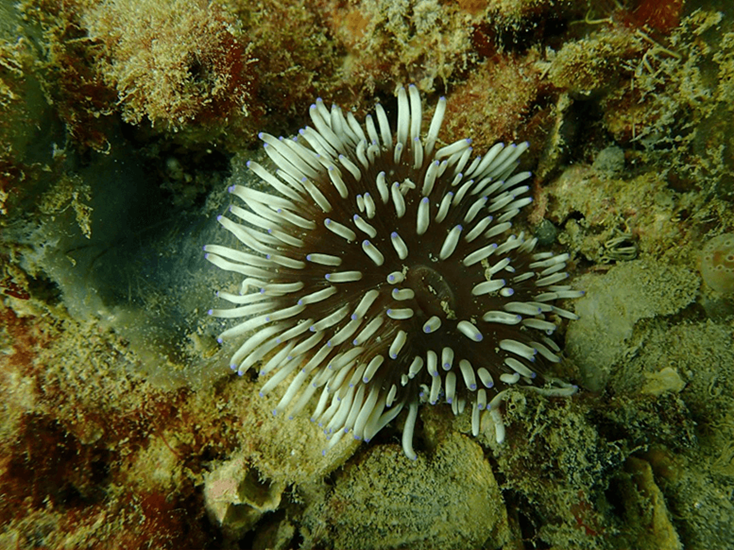
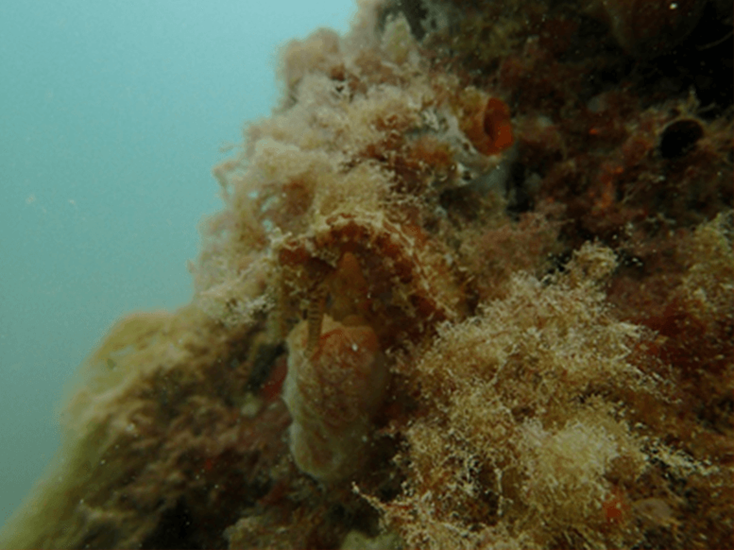
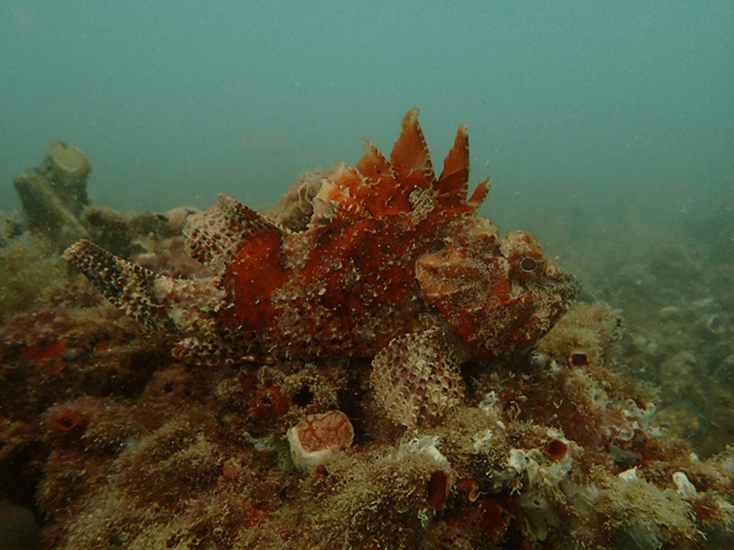
Side view of Diffuser 26 showing marine growth (hard and soft coral)
Although they look like plants, corals are animals because they do not make their own food, like plants do. Corals have tiny, tentacle-like arms that they use to capture their food from the water and sweep into their mouths.
Coral is in the same family as sea anemones and jellyfish.
Crinoid on Diffuser 4
Crinoids are part of a large group of marine invertebrate animals called echinoderms. Other echinoderms are starfish, sea urchins, and sea cucumbers. All living echinoderms have what is called ‘pentameral symmetry’, which means their bodies are organised in patterns of five; for example, the five arms of the common starfish.
Sea star at mouth of the diffuser
Sea stars are echinoderms, along with brittle stars, feather stars, sea urchins and sea cucumbers. At the tip of each arm is a small red eye and beneath the body is a central mouth. They have tube feet, each with a suction disc at the tip, which it uses to move about.
Sea stars are remarkable, as they are able to regenerate lost or damaged parts of their bodies. An arm that is broken off can be regrown.
Sea stars along the diffuser
Sea stars are echinoderms, along with brittle stars, feather stars, sea urchins and sea cucumbers. At the tip of each arm is a small red eye and beneath the body is a central mouth. They have tube feet, each with a suction disc at the tip, which it uses to move about.
Sea stars are remarkable, as they are able to regenerate lost or damaged parts of their bodies. An arm that is broken off can be regrown.
Sea anemone at the Diffuser 20 manhole
Anemones are beautiful marine animals with wavy tentacles. Usually brightly coloured, they resemble underwater flowers. Certain species of sea anemones are thought to be able to survive for 100 years or more.
Sea anemones are actually carnivores. They use their beautiful flower-like tentacles to catch and paralyse fish, snails or crabs.
A seahorse on Diffuser 20
The West Australian Seahorse is a very special fish for us because it is an endemic - found only on the west coast, from Cape Leeuwin to Shark Bay. Especially during the summer breeding season, this species loves muddy, silty habitats – places like the Swan River Estuary and Cockburn Sound.
They can’t swim fast to catch prey or escape predators, they rely on a mastery of camouflage. They come in brown, white, yellow, orange, red and even purple, but they can change colour too.
West Australian Seahorses are a protected species.
Stonefish at Diffuser 21
The Reef Stonefish can be superbly camouflaged, often looking like an encrusted rock or lump of coral. They have 13 stout dorsal fin spines which can inject an extremely poisonous venom.